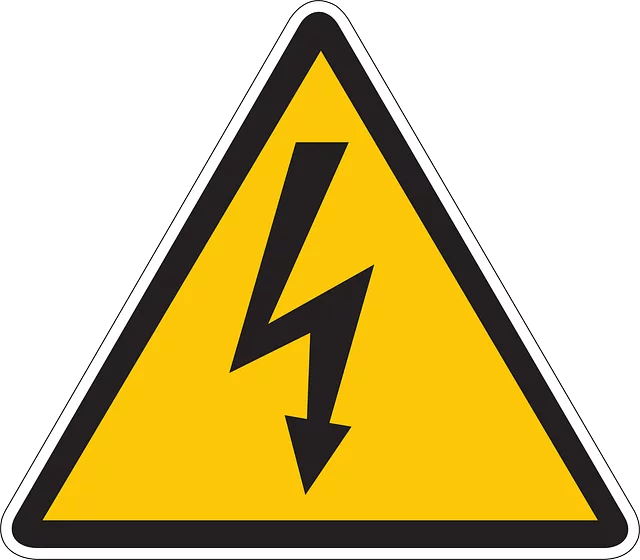OSHA workplace safety inspections are crucial for maintaining secure job sites by rigorously evaluating equipment, employee training, chemical exposure, and SDS (Safety Data Sheet) compliance. These inspections involve analyzing past safety records and conducting on-site assessments to identify violations and their causes, aiding in resolving recurring issues and enhancing hazard assessment protocols. Hazard assessment protocols are essential for identifying physical, chemical, biological, and ergonomic hazards outlined in SDS. Adhering to strict SDS compliance, combined with robust hazard assessment, fosters a culture of awareness and safety, reducing incidents and promoting healthier work environments. A systematic inspection regimen is the first step in root cause analysis (RCA), which, by leveraging SDS and stakeholder interviews, identifies fundamental drivers behind incidents for informed prevention strategies. Effective solutions, including updated documentation, employee training, and tailored health and safety protocols, mitigate risks and prevent future incidents, ultimately fostering a workplace culture centered around safety.
Root cause analysis is a critical process in identifying and preventing safety incidents. OSHA workplace safety inspections provide a robust foundation for incident prevention by identifying potential hazards. This article explores essential components of hazard assessment protocols to uncover and mitigate risks effectively. Additionally, it delves into the role of Safety Data Sheet (SDS) compliance in accident reduction. Through a step-by-step guide, we outline a systematic approach to root cause analysis, followed by implementing solutions that foster a safer work environment.
- Understanding OSHA Workplace Safety Inspections: A Foundation for Incident Prevention
- Hazard Assessment Protocols: Uncovering and Mitigating Potential Dangers
- The Role of Safety Data Sheet (SDS) Compliance in Accident Reduction
- Step-by-Step Guide to Effective Root Cause Analysis
- Implementing Solutions: Moving Forward After Identifying Root Causes
Understanding OSHA Workplace Safety Inspections: A Foundation for Incident Prevention

OSHA (Occupational Safety and Health Administration) workplace safety inspections are a critical component in ensuring job sites adhere to hazard assessment protocols and maintain a safe working environment. These inspections involve thorough evaluations of various aspects, including equipment condition, employee training, chemical exposure, and safety data sheet (SDS) compliance. By adhering to OSHA guidelines, businesses can proactively identify potential risks and implement necessary changes to prevent incidents.
The process begins with a comprehensive review of the facility’s safety record, followed by an on-site assessment. Inspectors examine workplace practices, look for safety violations, and gather information to pinpoint the root causes of past incidents. This data is crucial in identifying recurring issues and areas where hazard assessment protocols may require enhancement. Effective inspections lead to improved compliance with safety standards, ultimately reducing the likelihood of future safety hazards and incidents.
Hazard Assessment Protocols: Uncovering and Mitigating Potential Dangers

In the realm of OSHA workplace safety inspections, hazard assessment protocols serve as a cornerstone for identifying and mitigating potential dangers. These comprehensive processes involve systematic evaluations of work environments, tasks, and equipment to uncover any hazards that may pose risks to employees. By adhering to rigorous hazard assessment protocols, organizations can ensure they meet crucial safety standards and maintain compliance with vital regulatory requirements, such as those outlined in Safety Data Sheet (SDS) documentation.
Effective hazard assessment involves a multifaceted approach, including thorough inspections, employee involvement, and the analysis of past incidents. Through this data-driven process, organizations can identify not only physical risks like slip-and-fall hazards or machinery dangers but also chemical, biological, and ergonomic risks detailed in SDS information. This proactive approach to workplace safety empowers companies to implement tailored mitigation strategies, fostering a safer work environment for all “folks” and acting as a true game changer in the pursuit of enhanced OSHA compliance.
The Role of Safety Data Sheet (SDS) Compliance in Accident Reduction

In the context of OSHA workplace safety inspections, ensuring thorough Safety Data Sheet (SDS) compliance is a fundamental step in accident reduction. SDS provide critical information about the properties and hazards associated with chemical products, empowering employees to handle them safely. During inspections, compliance with SDS guidelines involves checking for accurate labeling, availability of up-to-date sheets, proper storage, and employee training on the content of these sheets. Adherence to these protocols significantly reduces the risk of exposure to hazardous substances, which is a primary cause of many workplace accidents.
Hazard assessment protocols are integral to this process as they identify potential risks within the work environment. By systematically evaluating each aspect of operations, including the use and storage of chemicals, employers can pinpoint specific hazards and implement targeted safety measures. SDS compliance, in conjunction with robust hazard assessment, creates a culture of awareness that fosters workplace safety, ultimately leading to fewer incidents and a healthier work environment.
Step-by-Step Guide to Effective Root Cause Analysis

Step-by-Step Guide to Effective Root Cause Analysis
The first step in any root cause analysis (RCA) is to conduct OSHA workplace safety inspections regularly. These inspections should be thorough and systematic, covering all areas of the facility and focusing on potential hazards. Identify and document existing safety protocols and their adherence to industry standards and legal requirements, such as those outlined in hazard assessment protocols. This initial phase lays the groundwork for understanding the environment where incidents occur.
After identifying an incident, gather relevant data from safety data sheets (SDS) to understand the nature of hazardous materials involved and the conditions surrounding the event. Next, retrace the steps leading up to the incident, interviewing witnesses and affected personnel without blame attribution. Analyze the data collected to identify patterns or recurring issues. Through this process, pinpoint the root causes—the fundamental reasons behind the incident—rather than merely addressing symptoms. This step-by-step approach ensures a comprehensive understanding of the incident, enabling effective prevention strategies moving forward.
Implementing Solutions: Moving Forward After Identifying Root Causes

After identifying the root causes behind a safety incident through comprehensive OSHA workplace safety inspections and hazard assessment protocols, the next crucial step is implementing effective solutions. This process involves taking proactive measures to mitigate risks and prevent future occurrences. One key aspect is ensuring compliance with safety data sheet (SDS) guidelines. Companies should update their SDS documentation, making it easily accessible to all employees and thoroughly training them on the new information.
Additionally, leveraging the insights gained from root cause analysis, organizations can develop more robust health and safety protocols tailored to their specific operations. This may include enhancing existing procedures, implementing new technologies for monitoring and control, or introducing stricter training programs. The goal is to foster a culture of continuous improvement where safety is not just compliant but also integral to every aspect of the workplace.


